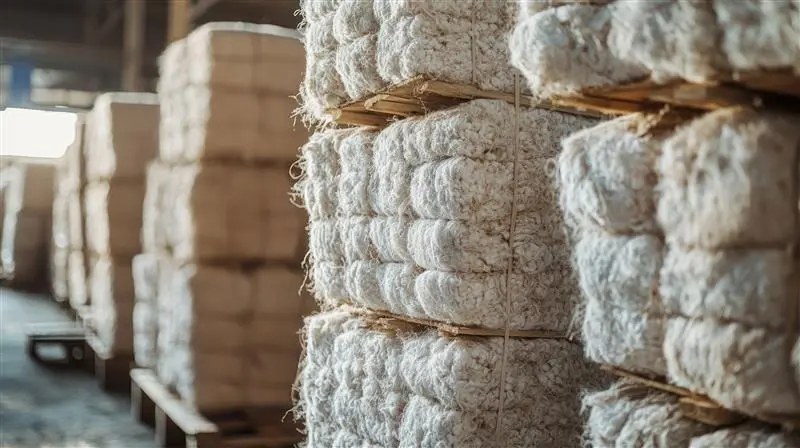Comparing DNA Testing vs. Forensic Isotopic Testing for Supply Chain Verification
By Dr. Kate Jones | 9 October 2023
minutes to read.

Transaction certificates and paper trails have long been the traditional methods of verifying the origins and authenticity of products. But with rising counterfeits and unethical concerns in fashion supply chains, brands and retailers are turning to more sophisticated, scientific methods such as DNA testing and forensic isotopic testing for pin-point accuracy and transparency.
While each scientific technology has its own unique benefits and uses, choosing which method to use depends on the specific needs and goals of your business.
So, what is the difference between DNA testing and forensic isotopic testing?
Let’s find out.
Understanding DNA testing for species and material authentication
Commonly used for quality control purposes, DNA testing relies on the unique genetic material found in the raw material or product to verify its authenticity. This testing method is applied to various products, including plants and animals, but can be challenging when it comes to cotton and fashion.
- Species identification
DNA testing primarily analyzes the genetic makeup of a sample and compares it to an existing database of known species. For example, it can confirm whether a cotton sample belongs to a specific cotton variety for product consistency and quality control, but not necessarily where it came from.
- Limitations in origin determination
Despite its precision in species identification, DNA testing falls short when it comes to verifying the geographical origin of a product. Determining the exact place where a cotton variety was grown solely based on its DNA is often challenging, as many species are cultivated in multiple regions worldwide.
- DNA tagging
One alternative use of DNA in tracing origins is DNA tagging. However, this technique has limitations of its own. DNA tagging can only trace a product to the point where the DNA tag was applied, making it ineffective in uncovering the complete supply chain journey. Additionally, it relies heavily on the cooperation and active involvement of all the participants in the supply chain, and without access to information at various stages of production, the testing may be limited.
It’s also important to note that DNA tagging is a presence/absence testing method and cannot detect blends of non-compliant products, which can be a big problem in complex supply chains or adulterated goods.
Exploring forensic isotopic testing as an origin fingerprint tool
Forensic isotopic testing, on the other hand, reveals the unique Origin Fingerprint of a material. Unlike DNA testing, it does not concern itself with the genetic identity of the sample. Instead, it examines the unique ratio of isotopes and trace elements absorbed by everything that is grown, reared, or manufactured.
- Factors influencing isotope ratios
Isotope ratios are influenced by several naturally occurring factors, including altitude, temperature, precipitation, soil composition, and even the bedrock of a region. These factors create a distinctive and unique combination of parameters that serve as an Origin Fingerprint.
- The "origin fingerprint"
The origin fingerprint is like a geographical identifier. It captures the isotopic ratios and trace element signatures of a place. When a product's Origin Fingerprint matches a profile in a database, it confirms that the raw material came from that specific location.
- Detecting substitution or blending
Much like forensic scientists match fingerprints to criminal profiles, traceability solutions like Oritain employ isotope testing to verify the authenticity of products. If a product matches the origin fingerprint of a particular region, it substantiates its origin.
Conversely, any substitution or blending with materials from a different origin alters the origin fingerprint and exposes potential fraud or tampering.
Choosing the right testing method for supply chain integrity
The use of forensic isotopic testing has gained in popularity recently, especially in the context of global trade. The Department of Homeland Security (DHS) identified reliable forensic isotopic testing as evidence that importers may present to potentially prove that items do not originate in areas with connections to forced labor.
When importers find themselves subject to a Withhold Release Order (WRO), importers can use a primary sourced baseline, such as Oritain’s baseline which is sourced from hundreds of thousands of cotton samples collected directly from farms. This means that the reference data or samples used for testing are well-documented and reliable.
This evidence is not only admissible in a court of law, but also helps importers prove that their products are not connected to forced labor. In other words, forensic testing provides a solid defense for importers facing WROs and helps ensure fair trade practices.
Download our white paper to learn more about how Oritain’s forensic science can help you comply with the Uyghur Forced Labour and Prevention Act (UFLPA).
Disclaimer: The information provided in this document does not and is not intended to constitute legal advice. Instead, all information presented here is for general informational purposes only. Counsel should be consulted with respect to any particular legal situation.




